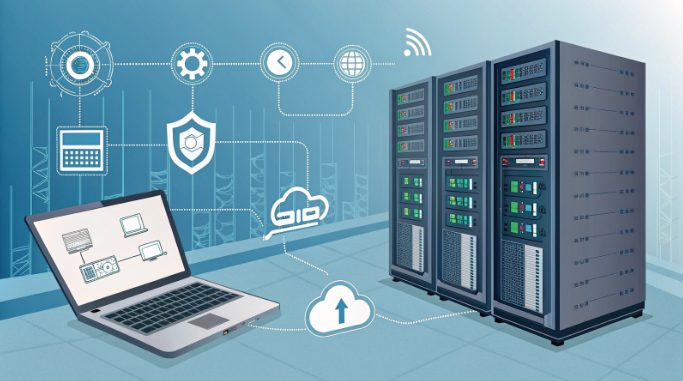Configure Remote Access on US Linux Servers: A Guide

In today’s interconnected digital landscape, efficiently managing Linux servers hosted in the US has become crucial for system administrators and DevOps professionals. Remote access and management capabilities are essential components of modern server infrastructure, enabling teams to maintain, monitor, and optimize their systems from anywhere in the world.
1. Understanding Remote Access Fundamentals
Remote server management represents a cornerstone of modern IT infrastructure, particularly for US-based Linux servers. This comprehensive guide will walk you through essential configurations, security measures, and best practices to establish robust remote access solutions.
2. Prerequisites for Remote Access Setup
Before diving into configuration details, ensure your system meets these fundamental requirements:
- A Linux server with a stable internet connection
- Root or sudo access privileges
- Basic command line experience
- Server’s public IP address
- Required ports open in your firewall (typically 22 for SSH)
3. Essential SSH Configuration Steps
SSH (Secure Shell) serves as your primary gateway for secure remote access. Here’s how to configure it properly:
- Install SSH server if not present:
sudo apt-get update sudo apt-get install openssh-server - Configure SSH daemon settings:
sudo nano /etc/ssh/sshd_config - Implement these recommended security settings:
- Change default port (optional but recommended)
- Disable root login
- Use key-based authentication
- Limit user access
4. Setting Up Key-Based Authentication
Key-based authentication provides superior security compared to password-based methods. Follow these steps:
- Generate SSH keys on your local machine:
ssh-keygen -t rsa -b 4096 - Transfer your public key to the server:
ssh-copy-id username@your-server-ip - Test the connection:
ssh username@your-server-ip
5. Remote File Management Solutions
Efficient file transfer capabilities are essential for server management. Here are the recommended methods:
- SFTP (SSH File Transfer Protocol):
sftp username@your-server-ip put localfile get remotefile - SCP (Secure Copy):
scp localfile username@your-server-ip:/remote/path scp username@your-server-ip:/remote/file /local/path
6. Advanced Monitoring and Management Tools
Implement these essential monitoring solutions for comprehensive server oversight:
- System Resource Monitoring:
sudo apt-get install htop iftop iotop - Log Management:
sudo apt-get install logwatch sudo logwatch --output mail --mailto your@email.com --detail high - Performance Analytics:
sudo apt-get install sysstat sar -u 1 5 # CPU usage sar -r 1 5 # Memory usage
7. Security Hardening Measures
Implement these critical security configurations to protect your US-based Linux server:
- Configure UFW (Uncomplicated Firewall):
sudo ufw default deny incoming sudo ufw default allow outgoing sudo ufw allow ssh sudo ufw enable - Install and configure Fail2ban:
sudo apt-get install fail2ban sudo cp /etc/fail2ban/jail.conf /etc/fail2ban/jail.local - Regular System Updates:
sudo apt-get update sudo apt-get upgrade sudo apt-get dist-upgrade
8. Automation and Scheduled Tasks
Streamline management tasks through automation:
- Configure automated backups:
0 2 * * * /usr/local/bin/backup-script.sh - Schedule system updates:
0 3 * * 0 /usr/local/bin/update-script.sh - Monitor system health:
*/5 * * * * /usr/local/bin/health-check.sh
9. Troubleshooting Common Issues
When managing remote Linux servers, you might encounter these common challenges:
- Connection Issues:
# Check SSH service status sudo systemctl status sshd # Verify port accessibility sudo netstat -tulpn | grep ssh - Permission Problems:
# Check file permissions ls -la /path/to/file # Modify if necessary chmod 644 /path/to/file chown user:group /path/to/file
10. Performance Optimization Tips
Implement these optimization strategies for better server performance:
- Memory Management:
# Check memory usage free -h # Clear cache if needed sync; echo 3 > /proc/sys/vm/drop_caches - Disk Space Optimization:
# Find large files du -sh /* | sort -hr # Clean old logs find /var/log -type f -name "*.log" -mtime +30 -delete
11. Best Practices for Ongoing Management
Follow these guidelines for maintaining optimal server performance and security:
- Implement regular backup procedures
- Monitor system logs daily
- Keep security patches up to date
- Document all configuration changes
- Maintain access control lists
12. Advanced Remote Management Techniques
For sophisticated server management, consider these advanced approaches:
- Configuration Management:
sudo apt-get install ansible ansible-playbook deploy.yml - Container Management:
docker ps docker stats docker-compose up -d
Conclusion
Effective remote management of Linux servers hosted in the United States requires a combination of proper configuration, security measures, and ongoing maintenance. By following this comprehensive guide, you’ve learned the essential steps for setting up secure remote access, implementing monitoring solutions, and maintaining optimal server performance. Remember to regularly review and update your security protocols and management practices to ensure continued system reliability and protection.
For additional support and advanced configurations, consider consulting official documentation or joining professional Linux administrator communities. Keep your systems updated and regularly test your remote access setup to maintain a robust and secure server environment.

